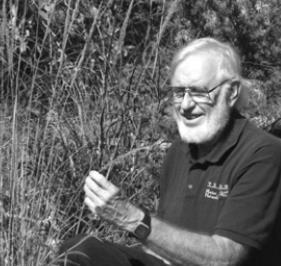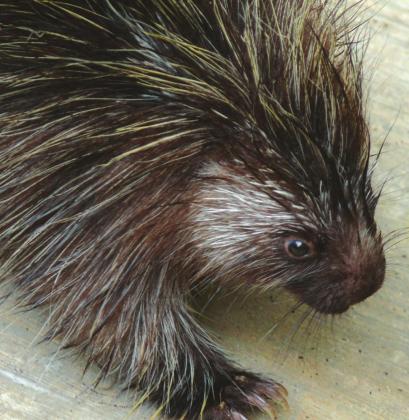Three More Native Hill Country Small Mammals: Two Big Rats and a Pseudo-Cat
These three Hill Country mammals are very different in most of their characteristics. Two big rats, one climbs and eats trees, one lives in or near the water, and a cat-like animal that isn’t a cat.
The North American Porcupine (Erethizon dorsatum) is in the order Rodentia. At up to 25 pounds, they are the second largest rodent in our area; only the beaver is larger. They are slow-moving animals with small heads, eyes and ears and an array of quills on the rump and large tail. Although they appear to be somewhat clumsy, they are actually very good climbers.
The porcupine is a herbivore whose diet varies with seasons, being mostly herbaceous ground vegetation in the summer, mostly inner tree bark and twigs in the fall, totally inner tree bark in the winter, and then significant amounts of ground vegetation in the spring. I had one eat a whole row of romaine lettuce one year!
The young are born with eyes and ears open and teeth erupted, and with quills! The newborn’s quills are soft, but harden quickly. They nurse for only a month and are on their own within six months.
In their relaxed, unthreatened state, their quills lie down along their back and tail, but upon being startled or threatened, they can raise them in an instant to point up and protect the animal. They can swing their tails and drive the quills into an attacker. The quills have barbs on the end making removal very painful.
Porcupines only occupied a few mountainous areas in the Trans-Pecos region in the late 1800s, but have since expanded their range, possibly because of increased tree density, into most of the western half of the state. Some folks believe, I think mistakenly, that porcupines kill trees. I know of several medium-sized favorite trees that were extensively chewed on years ago and are still quite healthy. If a species killed its favorite food source, what would it eat? Think about the Irish potato bug.
The American Beaver (Castor canadensis) is a large (up to 50 pounds) aquatic animal with a large flat tail. It is a herbivore that feeds mostly on soft inner tree bark (especially willows and cottonwoods), aquatic vegetation and green leaves. While we have all seen films of beavers building dams across small streams, in our part of the country, they usually dig out a den along a creek or river bank.
They have only one litter per year of three or four young, called kits. The kits are born with hair, eyes open, teeth visible and weigh about a pound.
Beavers were extensively trapped for their fur in the early 1800s and were quite rare in many areas by 1850, but after strict harvest regulations and some restocking, their numbers have returned to normal.
Animals that may be mistaken for beavers are the introduced nutria, which is generally smaller and with a naked round tail instead of a flat tail, and muskrats, which are much smaller and not generally found in the Hill Country. One tell-tale sign of a beaver is a tree stump near the water where the cut is pointed like a pencil.
The Ringtail (Bassariscus astutus) is a small cat-like animal with big eyes with white rings around them, large ears and a very long black and white striped tail. It is sometimes referred to as a “ringtail cat,” but in fact it is not a cat, but is in the same family (Procyonidae) as raccoons and coatis.
Ringtails are about the size of a large squirrel, and they climb trees as well as squirrels, including descending head first. They can move very fast and jump from tree to tree like a squirrel. They are omnivores, eating just about any small animal, fruit, green leaves, crayfish and insects. Years ago, miners caught them and put them in mines to catch rats and mice, and they were called Miner’s cats. They are strictly nocturnal and thus almost never seen in the daylight, so many folks never know they are there.
They sometimes have at least temporary “home ranges” which can be large for such a small animal, and they tend to use the same “latrine” area for their droppings repeatedly, which is one sign that one or more may be near.
They can make a den in a hollow tree, in rock crevices, or dig one underground. They have one litter of two to four young a year.
There are many other mammals in the Hill Country I haven’t discussed, such as rats, mice, moles, voles and bats, as well as larger animals such as coyote, bobcat mountain lion., and of course deer. Maybe another time.
Until next time…
Jim Stanley is a Texas Master Naturalist and the author of the books “Hill Country Ecology,” “Hill Country Landowner’s Guide” and “A Beginner’s Handbook for Rural Texas Landowners.” He can be reached at <jstmn@ktc.com>. Previous columns can be seen at <www.hillcountrynaturalist.org>, or at Riverside Nature Center at <https://riversidenaturecenter.org/past-blogs-from-a-friend/>.


